Caryn’s Thoughts
 My dad, Al Spencer loved trains. I’m sure it all started with his dad’s job as a carpenter on the Great Northern Railway. Dad and his siblings rode the trains to school and such. It was one of the perks of his dad’s job. I know most kids like trains, but I think Dad maybe liked them more than most kids. He grew up around them.
My dad, Al Spencer loved trains. I’m sure it all started with his dad’s job as a carpenter on the Great Northern Railway. Dad and his siblings rode the trains to school and such. It was one of the perks of his dad’s job. I know most kids like trains, but I think Dad maybe liked them more than most kids. He grew up around them.
On May 1, 1971, a very exciting event took place, especially for my dad. It was on that day that the Amtrak train was born. It was originally established by the Congressional Rail Passenger Service Act, which consolidated the United State’s existing 20 passenger railroads into one. Of course, most of us know that the Amtrak train has since had a long history…49 years to be exact. Back then the Amtrak train line served 43 states with a total of 21 routes. These days they not only handle traditional interstate passenger rail in 46 states, but they also operate high-speed trains along their busiest route, the Northeast Corridor from Washington DC, to Boston. With more than 500 destinations throughout a 21,000 mile system, Amtrak has grown to 33 routes across America. Nevertheless, the Amtrak train system was always focused on getting from Point A to Point B safely and swiftly, even in 1971.
From the time that first Amtrak rolled out of the station, my Dad was hooked. He knew he wanted to take a trip by way of that train. During the early years of the Amtrak, we heard a lot about it. It wasn’t going to be a trip that we went on as a family, but rather a special trip for Dad and Mom. That trip would finally happen in about 1991, when Mom and Dad took the Amtrak from San Diego to Seattle. My sister, Caryl Reed and her family lived there at the time, and they would spend time visiting with them after the train ride. My dad was so excited!! In fact, he was the epitome of “the kid in the candy shop.” I can see why he would be so excited. After  all, he had waited twenty years for that trip. I suppose that prior to that time, he couldn’t think of any reason to take the trip, but when my sister moved to Bremerton, Washington, the time had come. Mom and Dad made many trips to Washington in those years, but that trip on the Amtrak Train really was the most exciting way for them to travel.
all, he had waited twenty years for that trip. I suppose that prior to that time, he couldn’t think of any reason to take the trip, but when my sister moved to Bremerton, Washington, the time had come. Mom and Dad made many trips to Washington in those years, but that trip on the Amtrak Train really was the most exciting way for them to travel.
I can picture my dad now. Not how he looked. I have a picture of that. No…I can picture how he felt. He was that “kid in the candy store” again. I could picture him feeling like he was back in Superior, Wisconsin, hopping the train, even though he had a pass to ride the train.
 One of the most evil dictators of all time was Adolf Hitler. He not only wanted control of the world, but he decide that there were a number of people who had no right to live. To him, only the Aryan, or Master Race was of value. Hitler’s “Master Race” is a concept in Nazi ideology in which “the putative Nordic or Aryan races, predominant among Germans and other northern European peoples, are deemed the highest in racial hierarchy.” Hitler was obsessed with the idea of removing anyone who did not fit into that definition of the Master Race…especially the Jewish people.
One of the most evil dictators of all time was Adolf Hitler. He not only wanted control of the world, but he decide that there were a number of people who had no right to live. To him, only the Aryan, or Master Race was of value. Hitler’s “Master Race” is a concept in Nazi ideology in which “the putative Nordic or Aryan races, predominant among Germans and other northern European peoples, are deemed the highest in racial hierarchy.” Hitler was obsessed with the idea of removing anyone who did not fit into that definition of the Master Race…especially the Jewish people.
Hitler was insane, and in reality, insane is not a strong enough word for it. I don’t think that most of us could conceive of the level of evil that possessed Adolf Hitler. He didn’t care who died to bring about his plan for the world. He expected sacrifice from his people, unquestioned sacrifice. Meanwhile, Hitler himself was always safely hidden away…protected from his enemies…the people who disagreed with his evil cruelty. Hitler had often said that his Third Reich would be a 1,000-year Reich. He was determined to have a legacy that would span the ages. Well, he is remembered I suppose, but with disdain.
I’m sure Hitler had several places that he hid in, but one of them, a refurbished air-raid shelter seemed to be  his bunker of choice. Hitler had gone into his bunker on January 16, after deciding to remain in Berlin for the last great siege of the war. He knew he was losing, but coward that he was, had no intention of being arrested. Fifty-five feet under the chancellery, where as chancellor, he lived, was his shelter. It contained 18 small rooms and was fully self-sufficient, with its own water and electrical supply. During that time, he left only rarely (once to decorate a squadron of Hitler Youth) and spent most of his time micromanaging what was left of German defenses and entertaining such guests as Hermann Goering, Heinrich Himmler, and Joachim von Ribbentrop. At his side were Eva Braun and his dog, an Alsatian named Blondi.
his bunker of choice. Hitler had gone into his bunker on January 16, after deciding to remain in Berlin for the last great siege of the war. He knew he was losing, but coward that he was, had no intention of being arrested. Fifty-five feet under the chancellery, where as chancellor, he lived, was his shelter. It contained 18 small rooms and was fully self-sufficient, with its own water and electrical supply. During that time, he left only rarely (once to decorate a squadron of Hitler Youth) and spent most of his time micromanaging what was left of German defenses and entertaining such guests as Hermann Goering, Heinrich Himmler, and Joachim von Ribbentrop. At his side were Eva Braun and his dog, an Alsatian named Blondi.
Hitler was a coward, who put his men out on the front lines to do his evil bidding, while he hid behind the scenes, so that the opposing armies couldn’t get to him. He thought he had it all planned out. but as April 1945 came to a close, his “1,000 year Reich” was collapsing and enemy soldiers were closing in to shut him down. So, he married his long-time girlfriend, Eva Braun on April 28, 1945, and two days later they committed suicide together. He was warned by officers that the Russians were only a day or so from overtaking the chancellery.  They urged him to escape to Berchtesgarden, a small town in the Bavarian Alps where Hitler owned a home, but he instead chose suicide. It is believed that both he and his wife swallowed cyanide capsules…which had been tested for their efficacy on his “beloved” dog and her pups. Then, just to be sure, he shot himself with his service pistol. The couple’s bodies were cremated in the chancellery garden by the bunker survivors, as per Hitler’s orders and it was reported later that they were partially recovered by Russian troops. Still, that didn’t prove to many that he was dead. Finally, a German court officially declared Hitler dead in 1956. Finally the world was rid of a despicable piece of garbage.
They urged him to escape to Berchtesgarden, a small town in the Bavarian Alps where Hitler owned a home, but he instead chose suicide. It is believed that both he and his wife swallowed cyanide capsules…which had been tested for their efficacy on his “beloved” dog and her pups. Then, just to be sure, he shot himself with his service pistol. The couple’s bodies were cremated in the chancellery garden by the bunker survivors, as per Hitler’s orders and it was reported later that they were partially recovered by Russian troops. Still, that didn’t prove to many that he was dead. Finally, a German court officially declared Hitler dead in 1956. Finally the world was rid of a despicable piece of garbage.
 Written by guest author, Cheryl Masterson
Written by guest author, Cheryl Masterson
My sister, Caryn Schulenberg is a woman of many characteristics, interests, and capabilities. I will tell you a tiny little bit about her.
For one, she is the most determined and self-disciplined woman I know! When she makes her mind up to do something, she does it, and she does it well! She can stay on a diet like a world champion! She never lets her weight get very far out of hand, and when she goes over a ways, she goes on a diet, and there is nothing that will get her off that diet until she has reached her goal! She walks, hikes and stays in shape. She’s such a good example that her husband, Bob, has joined her in this determination and self-discipline over the years just to keep up with her!
She can write, and she is a good writer! She decided to start this blog many years ago, and she never fails to write something every single day of every single year! That’s determination, and self-discipline! She finds something that interests her, and she writes about it! She has many, many followers on her blog! Some of her stories are funny, some are sad, some are just good information to know, but all are interesting and keep her followers entertained and informed. Her writing also satisfies the need in her “to know.” She likes to know about so many things!
Caryn is unendingly compassionate, giving, caring, and very protective of her family, friends and loved ones! She will help anyone with anything they ask her for help with, and I do mean, anything. She will do her best, and give you all she has to give, even if she doesn’t know anything about what you have asked her to do! She will find out how to do it, and then, go do it! If she says she will do it, she will! She is a woman who can be counted on, and she never gripes, moans, or complains about anything that is asked of her, either. She just does it, or gives it. That’s it!
One of the times her compassion and understanding of, and for, her sisters and her Mother, and her protectiveness toward us, strongly came to her aid and helped her to take on a task the rest of us absolutely cringed from taking on because it was so devastating for our entire family. That happened when our Dad, Allen Spencer, was sick and in the hospital for 4 months! So sick they told us he would die! Any of you who know us very well, know about that time in our lives, because Caryn wrote about it quite a bit after it was over. But from my point of view, this is how Caryn handled that situation, and I, for one, will be forever grateful! We each 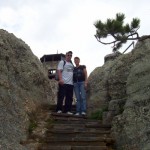
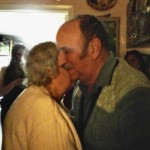 have our strong points, but Caryn took on the most hated, and horrible task I can think of during that time, and she did it for all of us! She dealt with the doctors! My sisters, our Mother and I all had, and have, the same faith in God Caryn has. Meaning we all believe the same way, and we are all strong in that faith. But I know, for myself, the emotional battering and harsh blows dealt to us by those well-meaning physicians as they reported to us several times a day, was far more than I could stand to receive first-hand! Those reports were truly aggressive and like physical blows in the beginning, and for quite a while! When none of us could bear to face their battering and horrifying, day to day reports, Caryn faced them, and most often, alone! And after she listened to them, and discussed their reports with them, she would then come and talk with us, and she always softened each horrifying report she received from them as much as she could, into a report we could better handle, softened with her faith in God, and pulling from us, our faith in God. Her ability to “run interference” between them and us, gave us the time we needed to compose ourselves, and get our minds on the Word of God, which is the most important thing we can do in our family, in a crisis! Her protective nature in the matter of the doctors sheltered us, and helped us all to continue to hope and pray in faith for our Dad and for his recovery! And he did recover! And he lived two more years in relatively good health, for which we are all so grateful to God! And I’ll tell you, Caryn not only listened to those doctors often horrifying reports, she told them she understood what they were saying, BUT . . . and then she would proceed to tell them what we believed, and gradually she turned every single one of those doctors and nurses to our side. Until they started to say the same things she was saying to them, and gradually, things began to change, and Dad recovered. Every one of those doctors and nurses remember her well, respect her, and always speak with her when they see her even yet today, 15 years later!
have our strong points, but Caryn took on the most hated, and horrible task I can think of during that time, and she did it for all of us! She dealt with the doctors! My sisters, our Mother and I all had, and have, the same faith in God Caryn has. Meaning we all believe the same way, and we are all strong in that faith. But I know, for myself, the emotional battering and harsh blows dealt to us by those well-meaning physicians as they reported to us several times a day, was far more than I could stand to receive first-hand! Those reports were truly aggressive and like physical blows in the beginning, and for quite a while! When none of us could bear to face their battering and horrifying, day to day reports, Caryn faced them, and most often, alone! And after she listened to them, and discussed their reports with them, she would then come and talk with us, and she always softened each horrifying report she received from them as much as she could, into a report we could better handle, softened with her faith in God, and pulling from us, our faith in God. Her ability to “run interference” between them and us, gave us the time we needed to compose ourselves, and get our minds on the Word of God, which is the most important thing we can do in our family, in a crisis! Her protective nature in the matter of the doctors sheltered us, and helped us all to continue to hope and pray in faith for our Dad and for his recovery! And he did recover! And he lived two more years in relatively good health, for which we are all so grateful to God! And I’ll tell you, Caryn not only listened to those doctors often horrifying reports, she told them she understood what they were saying, BUT . . . and then she would proceed to tell them what we believed, and gradually she turned every single one of those doctors and nurses to our side. Until they started to say the same things she was saying to them, and gradually, things began to change, and Dad recovered. Every one of those doctors and nurses remember her well, respect her, and always speak with her when they see her even yet today, 15 years later!
Caryn is a wonderful sister, wife, mother, grandmother and great-grandmother! She is always in your corner! She attends every event anyone invites her to if it’s at all possible. Birthdays, school performances, graduations, showers, weddings, births, funerals, parties, or whatever else is going on. She is there for her 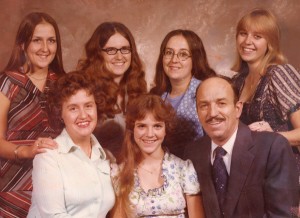 family and for her friends. She hates to disappoint anyone in any way! As I said before, she can be counted on even when no one else can.
family and for her friends. She hates to disappoint anyone in any way! As I said before, she can be counted on even when no one else can.
These are only a few of the zillion things I can think of to say about my sister, Caryn, but there isn’t enough room to put it all down on paper! This, at the very least, gives you a little insight into the kind of person she is, in case you didn’t already know! She is a blessing in every way to all who know and love her! Today is Caryn’s birthday, and I wish her the most wonderful kind of day, and a coming year that is blessed and happy beyond measure! Happy birthday, Caryn! I love you! We all love you! Have a great day!

 The reality is…raccoons are known pests. They tear through the trash. They eat food that is supposed to be for the dog or cat. They go into people’s homes by way of their doggy doors, and the resulting home invasion is disastrous. All that is true, but then you look at their antics, and I for one have a really hard time “hating” them. I know that lots of people will totally disagree with me, but just look at their cute little faces. No, I have not had a raccoon sneak into my house, but my neighbors have, and the stories they tell are…well, yikes!!
The reality is…raccoons are known pests. They tear through the trash. They eat food that is supposed to be for the dog or cat. They go into people’s homes by way of their doggy doors, and the resulting home invasion is disastrous. All that is true, but then you look at their antics, and I for one have a really hard time “hating” them. I know that lots of people will totally disagree with me, but just look at their cute little faces. No, I have not had a raccoon sneak into my house, but my neighbors have, and the stories they tell are…well, yikes!!
I suppose that their stories should have made me realize just exactly what pests raccoons are, but they really don’t know any better. They are just doing what comes naturally. As human take over more and more of the world, there is little chance of avoiding all interaction with 
 animals, and truth be told, I don’t think I would want to. For anyone who has stepped out their back door to see deer lounging in their yard, watched the squirrels on the power lines deliberately teasing the neighbor’s dogs to make them bark, the woodpecker pecking on the neighbor’s metal chimney early in the morning, and yes, the sneaky raccoon stealing your dog’s food, their antics are sometimes really funny. I love the videos of dancing deer, bears sitting at the picnic table, deer and cats playing together, and funny shots of animals in all stages of being startled by each other.
animals, and truth be told, I don’t think I would want to. For anyone who has stepped out their back door to see deer lounging in their yard, watched the squirrels on the power lines deliberately teasing the neighbor’s dogs to make them bark, the woodpecker pecking on the neighbor’s metal chimney early in the morning, and yes, the sneaky raccoon stealing your dog’s food, their antics are sometimes really funny. I love the videos of dancing deer, bears sitting at the picnic table, deer and cats playing together, and funny shots of animals in all stages of being startled by each other.
Yes, there are dangerous animals, and we would do well to keep our distance from them, but there are more animals who seem to have a wonderful sense of humor, and if we can get a peek at them when they aren’t 
 aware of us, we might see them in some of their funniest antics. The raccoon washing his bread before he easts it, even if it totally dissolves before it gets to his mouth, or laying lazily in a tree branch sleeping with its leg hanging over the sides. You might even get to see a little raccoon peeking at you from the tree branches where he is hiding. Yes, they are pests. Yes, they get into things, but they are just trying to share the space we all live in. Next time you are outside, take a look around you. You just might be surprised to see a wild animal being totally funny.
aware of us, we might see them in some of their funniest antics. The raccoon washing his bread before he easts it, even if it totally dissolves before it gets to his mouth, or laying lazily in a tree branch sleeping with its leg hanging over the sides. You might even get to see a little raccoon peeking at you from the tree branches where he is hiding. Yes, they are pests. Yes, they get into things, but they are just trying to share the space we all live in. Next time you are outside, take a look around you. You just might be surprised to see a wild animal being totally funny.
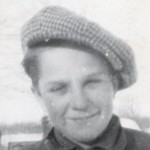

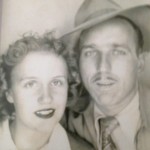 My dad…when I think of him, I always feel such a sense of pride in who he was. He had lived so great a life, seen so many things, gone places, and while many people might not think his life was so grand, I did. My dad, Allen Spencer, was born on April 27, 1924 in Superior, Wisconsin, to Allen and Anna (Schumacher) Spencer. He was the third of their four children, and one of two rather mischievous boys. The family owned a farm, and the children helped with the chores there. His dad worked for the Great Northern Railroad as a carpenter, building and repairing the seats on the train, and any other carpentry work needed. That fact gave the children Laura, William (Bill), Allen (my dad), and Ruth, the unique privilege of having a pass to ride the train for free, as a dependent of their dad, making their trips to school easier, though not without adventure. As I said, the boys were mischievous, and boarding the train in the normal, everyday way was just too boring. They boys hopped on the moving train, every chance they got, always hoping not to be caught and scolded. They were told repeatedly not to hop on the train, because it was unsafe, but they were boys, and they liked the danger.
My dad…when I think of him, I always feel such a sense of pride in who he was. He had lived so great a life, seen so many things, gone places, and while many people might not think his life was so grand, I did. My dad, Allen Spencer, was born on April 27, 1924 in Superior, Wisconsin, to Allen and Anna (Schumacher) Spencer. He was the third of their four children, and one of two rather mischievous boys. The family owned a farm, and the children helped with the chores there. His dad worked for the Great Northern Railroad as a carpenter, building and repairing the seats on the train, and any other carpentry work needed. That fact gave the children Laura, William (Bill), Allen (my dad), and Ruth, the unique privilege of having a pass to ride the train for free, as a dependent of their dad, making their trips to school easier, though not without adventure. As I said, the boys were mischievous, and boarding the train in the normal, everyday way was just too boring. They boys hopped on the moving train, every chance they got, always hoping not to be caught and scolded. They were told repeatedly not to hop on the train, because it was unsafe, but they were boys, and they liked the danger.
Growing up, the train adventures weren’t the only ones the boys had, and probably not the most dangerous either. When dad was about 15 and his brother, Uncle Bill about 17, the boys decided to take the summer and go look for work. They didn’t make reservations at hotels, or have previously lined up jobs, but rather hit the road and did odd jobs in the towns they came across. One time there was no room in the local hotel, so the local sheriff allowed them to sleep in the jail…the first and last time either of them was in jail, as far as I know. If I know my dad and my uncle, they thought it was a great adventure…even though their mother would have been appalled. Or maybe she would have been grateful to the sheriff for keeping her boys off the street.
When Dad was 17, he left home to go work at Douglas Aircraft Company in Santa Monica, California, building airplanes. I often wonder if it was his work there that made him a prime candidate for the position he held in World War II, as a top turret gunner and flight engineer on a B-17 based at Great Ashfield, Suffolk, England. I don’t know his thoughts on being in one of the countries where his ancestors had hailed from, but to my genealogist’s eyes, it would have been the best gift ever given…had it not been for the war, of course. To find himself in the “old stomping grounds” of many of his ancestors…well, it would have been beyond awesome. Dad, decided that he didn’t need much, and so he sent most of his pay home to be put in saving, telling his mom, that if she needed it, she was to use it, because he could always get a job when he got home. In war, times are tough, and Dad wanted to make sure that his family, back home in Superior was well and had enough money to get by. During his R and R time, Dad spent time in Miami, Florida and Galveston, Texas, and of course his training for service had taken place on several air bases across the United States. Dad had always loved to travel, so I’m sure his wanderer’s heart took great pleasure in the many locations he found himself in.
It was, in fact, his wanderer’s heart that brought him across the path of my Aunt Virginia and her husband at the time. She later introduced him to her sister and his future wife, my mom, Collene Byer. Mom was totally smitten by Dad, immediately thinking that he was the most handsome man she had ever seen. Before long, she loved him immensely, but she was a school girl, and had to wait a while to actually marry him. As was more common in those days, my dad was twelve years older than my mom, but theirs was a love that would last until his passing in 2007. Even after his passing, Mom had no desire to see anyone else. She just couldn’t imagine it. He was the only love of her life.
Dad never lost the love of travel, though his married life settled him first for several years in Superior, Wisconsin, and the for the rest of his life in Casper, Wyoming. He wanted to show his family the places he loved, most importantly the United States. He often told us that this was a beautiful country, and not only should we try to see it, we should drive, because you could see much more from the ground than from a plane. Of course, for most of us time constraints don’t allow for cross country drives, but after the flight to get there, we try to see the area surrounding our destination. Dad, I’m certain, would have viewed that type of travel with a measure of skepticism. Still, he loved to hear about our travels. He always seemed to have a far away look on 
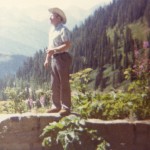
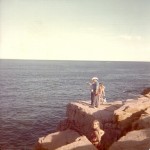 his face, because he could picture the same place in his mind…you see, he had most likely been there before, and he was so happy that we had followed in his footsteps. Today would have been my dad’s 96th birthday. Happy birthday in Heaven, Dad. I know you and Mom are having a wonderful time. We love and miss you very much and can’t wait to see you again.
his face, because he could picture the same place in his mind…you see, he had most likely been there before, and he was so happy that we had followed in his footsteps. Today would have been my dad’s 96th birthday. Happy birthday in Heaven, Dad. I know you and Mom are having a wonderful time. We love and miss you very much and can’t wait to see you again.

 My grand nephew, Zack Spethman, like all kids these days has been staying home, sheltering in place, and attending homeschool. Zack is a very social person, often making the rounds of people in the room and hugging many of them. It is just Zack’s way. He is a very loving and kind person. Now…in these trying times of social distancing, he isn’t supposed to hug people anymore…seriously!! That is something that makes me sad, because hugging is one of the things that defines who Zack is. I know that somewhere, down the road, things will get back to normal in the world, but even then, we are being discouraged from touching each other. That is especially sad, because when babies are little, we know that the lack of touch can actually cause them to stop growing. People need contact, and I don’t want to see that end. For those of us who are huggers, this is a really hard thing to do.
My grand nephew, Zack Spethman, like all kids these days has been staying home, sheltering in place, and attending homeschool. Zack is a very social person, often making the rounds of people in the room and hugging many of them. It is just Zack’s way. He is a very loving and kind person. Now…in these trying times of social distancing, he isn’t supposed to hug people anymore…seriously!! That is something that makes me sad, because hugging is one of the things that defines who Zack is. I know that somewhere, down the road, things will get back to normal in the world, but even then, we are being discouraged from touching each other. That is especially sad, because when babies are little, we know that the lack of touch can actually cause them to stop growing. People need contact, and I don’t want to see that end. For those of us who are huggers, this is a really hard thing to do.
Zack is a very upbeat kind of guy. He has such a calm way of walking through this world…a kind of peace about things. Nothing ever seems to get him riled up. I suppose his parents might tell me different, because they are around him much more than I am, but the Zack I see is very much at peace with life…and what a great way to be. For me, and most others who know Zack, it is a phenomenal way to be, because he gives us a feeling that everything is going to be ok too.
Zack is the second child of my niece, Jenny Spethman and her husband, Steve. He and his 3 rowdy siblings, keep their parents hopping with all their activities. His peaceful personality, does have it’s “warrior” side too, for lack of a better word. The warrior in him mostly comes out on the football field, the basketball court, and any other sport he likes and is playing. I also suspect that his “warrior” side would come out if someone was hurting his family, or even his friends. He is the kind of guy who doesn’t tolerate bullying of anyone.
Zack’s family has been having some very special times, just being together, even if that means they can’t 
 spend time with extended family members, and that is hard on everyone. Social distancing doesn’t mean they can’t go to the mountains, the lake, or parks…at least not here in Wyoming, so they have been getting out in the fresh air too, and that has kept the cabin fever at bay. For Zack and his siblings, like so many other kids, this school year has been one for the record books, but they will survive and even thrive, as this pandemic passes, and life reopens. Today is Zack’s 15th birthday. Up next…learning to drive. How can that be? Happy birthday Zack!! Have a great day!! We love you!!
spend time with extended family members, and that is hard on everyone. Social distancing doesn’t mean they can’t go to the mountains, the lake, or parks…at least not here in Wyoming, so they have been getting out in the fresh air too, and that has kept the cabin fever at bay. For Zack and his siblings, like so many other kids, this school year has been one for the record books, but they will survive and even thrive, as this pandemic passes, and life reopens. Today is Zack’s 15th birthday. Up next…learning to drive. How can that be? Happy birthday Zack!! Have a great day!! We love you!!


 My Aunt Doris Spencer is a wonderful woman who has always had a great sense of humor and a great imagination. When my mom, Collene Byer Spencer married my dad, Allen Spencer, they moved from Casper, Wyoming to Superior, Wisconsin. Dad’s family was from Superior, and most still lived there, so Dad was quite comfortable going home again. Mom was a young bride, who didn’t know anyone there, but found a new sister-in-law and best friend in Aunt Doris. They quickly became inseparable. They lived across the back yard from each other…there was no ally to separate the homes, but rather, just a fence and a gate. It was a great place to raise cousins, their children, together.
My Aunt Doris Spencer is a wonderful woman who has always had a great sense of humor and a great imagination. When my mom, Collene Byer Spencer married my dad, Allen Spencer, they moved from Casper, Wyoming to Superior, Wisconsin. Dad’s family was from Superior, and most still lived there, so Dad was quite comfortable going home again. Mom was a young bride, who didn’t know anyone there, but found a new sister-in-law and best friend in Aunt Doris. They quickly became inseparable. They lived across the back yard from each other…there was no ally to separate the homes, but rather, just a fence and a gate. It was a great place to raise cousins, their children, together.
I am reminded sometimes, of my aunt and uncle’s cabin at Lake Superior, and all the fun we had there over the years. Everything from time spent in the Lake, to the drive out too the lake. Wonderful memories all. My sister, Cheryl and I were talking about a particularly funny incident the other day. Our Uncle Bill was already at the cabin, and Aunt Doris and my cousin Pam, their daughter, were coming out later. As she drove, probably is a hurry for the weekend at the cabin to begin, she wasn’t really paying close attention to the speed of the car. Before she became aware that she was speeding, she heard sirens coming up behind her. Like most of us the feeling of immediate dread leapt up, but I don’t think Aunt Doris had ever received a ticket in her life. She was really very shook up about it. I’m not sure she even knew how shook up she was, but I’m sure that her daughter knew how shook up she was, because Aunt Doris mentioned later that Pam had said, “Are you afraid of that man, Mommy?”
The police officer, told her she had been speeding, and that he was going to have to give her a ticket. He went back to his car to write the ticket. For her part, Aunt Doris simply drove away. I can only imagine what went through the police officers mind. I’m sure he knew that Aunt Doris wasn’t any kind of a criminal. No one, whether they knew Aunt Doris or not, could possibly have though she could be a criminal. She simply wasn’t the type…couldn’t possibly be the type. So, he didn’t go after the woman who, being shook up, had driven away instead of waiting for her ticket.
Aunt Doris arrived at the cabin, and told Uncle Bill about the police officer and the speeding ticket. I’m sure that it was very clear to him that she was very shook up about the whole incident. After listening to her account of the traffic stop, Uncle Bill said, “Well ok. Let’s see the ticket.” Aunt Doris asked, a bit shocked, “What ticket?” Uncle Bill said, “The ticket he gave you!!” Then the realization came, probably to both of them, that there was no ticket, because she had simply driven away. Of course, my Uncle Bill, being quite mischievous, began to tell her that the police were going to be after her for leaving, and I can just picture my rather innocent aunt “freaking out” at the thought of the police showing up to “haul her off” in handcuffs. Of course, no such arrest ever took place, because the police officer, simply passed the event off as the actions of a woman who had never received a ticket before, and was terribly shook up about it. Besides, just imagine going back to the station and telling the guys that a woman drove away when he was trying to write her a ticket. Would he become the laughingstock, or maybe he did tell them, and they all laughed at the situation, and 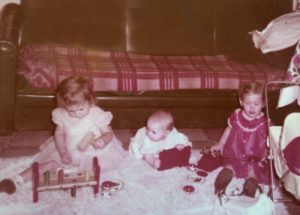
 agreed that he couldn’t give her a ticket now…he just couldn’t!!
agreed that he couldn’t give her a ticket now…he just couldn’t!!
Today is my Aunt Doris’ 96th birthday, and while she like most people in the United States is under lockdown, it isn’t because of any arrest, because that arrest never came. She is living quietly, still in Superior, Wisconsin, and doing very well indeed…clear in mind, and healthy in body, for which we are all thankful, Happy birthday Aunt Doris!! Have a great day!! We love you very much!!

 My grand nephew, Bowen Parmely is the only son of my nephew, Eric Parmely and his wife Ashley. Being the only boy, with three sisters can be a bit daunting sometimes I’m sure, but Bowen is very loved by his sisters. Having only sisters myself, I know how overwhelming girls can be. We all have our own ideas about how things should go, and an easy going little boy could get pushed around by so many girls.
My grand nephew, Bowen Parmely is the only son of my nephew, Eric Parmely and his wife Ashley. Being the only boy, with three sisters can be a bit daunting sometimes I’m sure, but Bowen is very loved by his sisters. Having only sisters myself, I know how overwhelming girls can be. We all have our own ideas about how things should go, and an easy going little boy could get pushed around by so many girls.
Life on the farm is wonderful for Bowen. He loves the animals they raise, and really can’t think of anywhere he would rather be. I think his favorite place on the farm is seated on the back of a horse, preferably eating his popsicle. Of course, he is just as happy holding he kitty or playing with the dogs the family has. For most little boys, living on a farm with lots of animals, and plenty of hiding places in the 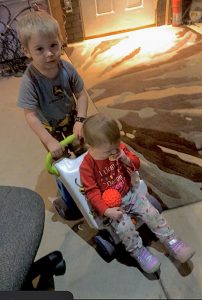 hay required to feed the animals would be the life. Of course, having two of his sisters be older than he is, makes the many fun games they play together possible. There is a lot to be said for the imagination of big sisters. Sometimes I wonder, however, how often Bowen find himself playing games that seem a bit girly to him, and thinking, “Boy, oh boy, I would love to have a friend to play with that is a boy, who would play the kind of games I want to.” Maybe not, but it seems logical to me. Boys are wired differently, and we girls just don’t think the same way most of the time. The good news is that Bowens parents are not prissy people, and neither are the girls, so things are “all good” for the most part.
hay required to feed the animals would be the life. Of course, having two of his sisters be older than he is, makes the many fun games they play together possible. There is a lot to be said for the imagination of big sisters. Sometimes I wonder, however, how often Bowen find himself playing games that seem a bit girly to him, and thinking, “Boy, oh boy, I would love to have a friend to play with that is a boy, who would play the kind of games I want to.” Maybe not, but it seems logical to me. Boys are wired differently, and we girls just don’t think the same way most of the time. The good news is that Bowens parents are not prissy people, and neither are the girls, so things are “all good” for the most part.
The family loves to get out and go hiking, skiing, and riding their bicycles…all things that most boys love to do, and Bowen is no exception. He is totally in his element outside. It doesn’t matter if its playing in the dirt or mud, running with the dogs, riding the horses, or riding his bicycle, Bowen is an active boy with lots of energy. He is, after all, his daddy’s boy, and wants nothing more than to be just like his dad. What boy doesn’t, really? Still, he loves his mommy, and is a great joy for her…as he is for everyone who knows him. Bowen having a little sister has made him sensitive to the needs of the little ones too. At Christmas, when our whole family got 
 together, I watched as he pushed my great granddaughter around in a stroller, the two of them having a fabulous time. He didn’t even expect her to push him, probably because she is younger, but rather, he was just happy to make her smile, and she in turn loved playing with her cousin. I could see that Bowen has a heart for these girls, older or younger. I think that will make him a very wonderful gentleman when he grows up, and really, makes him quite the little gentleman right now. Today is Bowen’s 3rd birthday. Happy birthday Bowen!! Have a great day!! We love you!!
together, I watched as he pushed my great granddaughter around in a stroller, the two of them having a fabulous time. He didn’t even expect her to push him, probably because she is younger, but rather, he was just happy to make her smile, and she in turn loved playing with her cousin. I could see that Bowen has a heart for these girls, older or younger. I think that will make him a very wonderful gentleman when he grows up, and really, makes him quite the little gentleman right now. Today is Bowen’s 3rd birthday. Happy birthday Bowen!! Have a great day!! We love you!!
 Imagine being forced to take action against your own business. Most of us couldn’t even begin to comprehend what could possibly bring about such an event, but it has happened in the past…unbelievably. On April 23, 1938, before the main Holocaust took place, but leading up to it for sure, Austria’s 200,000 Jews were thrown into a state of panic. The Nazi anti-Semitic movement was gaining momentum, the Hitler Youth were becoming more and more emboldened at the urging of their evil leader. Demonstrations were held, in front of the Jewish shops, and more often that not, the Jewish shopkeeper was forced to carry a sign and actually picket their own shops.
Imagine being forced to take action against your own business. Most of us couldn’t even begin to comprehend what could possibly bring about such an event, but it has happened in the past…unbelievably. On April 23, 1938, before the main Holocaust took place, but leading up to it for sure, Austria’s 200,000 Jews were thrown into a state of panic. The Nazi anti-Semitic movement was gaining momentum, the Hitler Youth were becoming more and more emboldened at the urging of their evil leader. Demonstrations were held, in front of the Jewish shops, and more often that not, the Jewish shopkeeper was forced to carry a sign and actually picket their own shops.
The situation was alarming to the Jews, as they recalled that Chancellor Adolf Hitler’s so-called “Easter Peace” was to end on April 24th. Many of the German police had been gone since Friday and all but a few German troops were scheduled to leave soon. That might have seemed like a good thing to most of us, but the Jews knew better. They expected to find the situation in Austria more completely under the control of Austrian anti-Semites who were filled with hate for the Jews. So much had changed since the March 12, 1938, when the Nazis annexed Austria. The Jewish people had been transformed from successful business people and respected citizens, to being considered less than human.
While no mention of the boycott and forced picketing appeared in newspapers, who talked only about the need to infuse a “fresh spirit” into the anti-Jewish drive, the audacity of what took place was something far more sinister than the innocent sounding call to action. This could have easily been the beginning of the horrific event known to most of us as The Holocaust. Hitler encouraged the Nazis saying, “With the Easter peace over, Jewish agitators must look forward to meeting in person that typically German personage who dons evening dress when the time comes to wield the axe.” I did not know this, but German executioners wore evening dress for beheadings…like it was a big celebration.
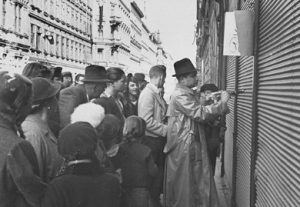
Any Jewish business was a target…not just in Austria and Germany, but Hitler’s poisonous rhetoric spilled over to other countries as well. Even countries who didn’t really hate the Jewish people turned against the Jewish people…mostly because they were afraid of the consequences they could face by being empathetic with the Jewish people. The humiliation poured out on the Jewish people from all directions was appalling, and criminal. And the idea of forcing them to picket in front of their own business…against their own business, is despicable. The audacity of such an act is only topped by the further cruel acts that were carried out on these same people.
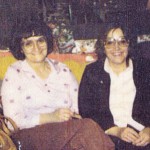
 As my Aunt Deloris Johnson’s birthday approached, I wanted to get a different aspect of the woman who was my aunt, and who we lost so long ago to brain cancer. So, I contacted her oldest child, Ellen Bremner to ask her for her memories of her mom. Some of what she told me, I knew, of course, but some of the things she told me were new to me, because they were treasures from her daughter’s heart.
As my Aunt Deloris Johnson’s birthday approached, I wanted to get a different aspect of the woman who was my aunt, and who we lost so long ago to brain cancer. So, I contacted her oldest child, Ellen Bremner to ask her for her memories of her mom. Some of what she told me, I knew, of course, but some of the things she told me were new to me, because they were treasures from her daughter’s heart.
Aunt Deloris, like most of the Byer family to which she was born, was always late. That fact drove her kids crazy. Most of my grandparents George and Hattie Byer’s grandchildren could relate to that fact. The family had a running joke, that our parents operated on Byer Time, and they were always at least half an hour late. Nevertheless Aunt Dee, as we all called her, tried her hardest to be on time, even attaching a watch to her running shoes so she could keep track of time while working. Her second child, Elmer Johnson, always said that she was the true inventor of the “shoe watch.” Nevertheless, time was a concept that always eluded her, and the shoe watch did nothing to change that.
Aunt Dee loved red lipstick, a part of the time she grew up in I’m sure, because my mother, her sister, Collene Spencer wort red lipstick a lot too. Most of the kids of my generation went much lighter with our lipstick, although the darker colors are back now. Aunt Dee loved black coffee, and as I recall, drank it all day long. Black coffee is a little much for me, and I always use cream in mine. She also loved sweets, except candy, which she never ate. She grew up in a household of singing, and loved to sing all her life, her favorite songs being ballads, most of them sad songs that made her children cry.
Ellen told me that her mom was a real germaphobe when they were young, and I found myself thinking that she would have been on the cutting edge of situations like the Coronavirus Pandemic, already doing what needed to be done to fight the virus. Ellen said that she bleached and Lysoled everything, to make sure that the germs didn’t take hold in her home, and she used the many home remedies she knew to keep her family healthy. Aunt Dee was a caring, sensitive, loyal, and loving person. Her family and her husband, Uncle Elmer Johnson, whom she loved deeply, were her life, and she protected her children at all costs. She loved each of them equally. Her own fear of the water, caused her to decide that her children would not take swimming lessons…something she may have softened on after the two oldest children. Aunt Dee was a very good cook, even though it was not her favorite thing…I can relate to that. Nevertheless, she learned a lot about cooking from her mother-in-law, and added that to what her mom had taught her to make her an excellent cook.
She had an altruistic and caring heart, and hated injustice, a fact that inspired her daughter, Ellen to choose service oriented work. Aunt Dee was a dreamer, and a bit of an artist. She loved crafts, painting, and knitting, and indulged in these pastimes whenever money allowed. She was a collector, which went along well with the craft idea, but like most of us, who are collectors, thinking we will “find a use for such an item” down the road, it can create clutter. Still, I bet she had some very cool things in her stash.
Ellen tells me, “Mom had so many plans for her retirement years! So many things she wanted to do and try! 
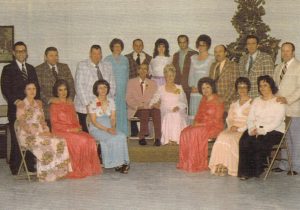 She wasn’t afraid to challenge herself in her later years. It broke her heart when she realized that her dreams would not come to fruition. But she left this world knowing she was loved, and telling her family how much she loved them. We miss her quirky, generous, loving, dreamers heart and soul!” As do we, her extended family. She was a wonderful woman, and a very special aunt to all of us. Today would have been Aunt Dee’s 89th birthday. Happy birthday in Heaven Aunt Dee. We love and miss you very much, and can’t wait to see you again.
She wasn’t afraid to challenge herself in her later years. It broke her heart when she realized that her dreams would not come to fruition. But she left this world knowing she was loved, and telling her family how much she loved them. We miss her quirky, generous, loving, dreamers heart and soul!” As do we, her extended family. She was a wonderful woman, and a very special aunt to all of us. Today would have been Aunt Dee’s 89th birthday. Happy birthday in Heaven Aunt Dee. We love and miss you very much, and can’t wait to see you again.

